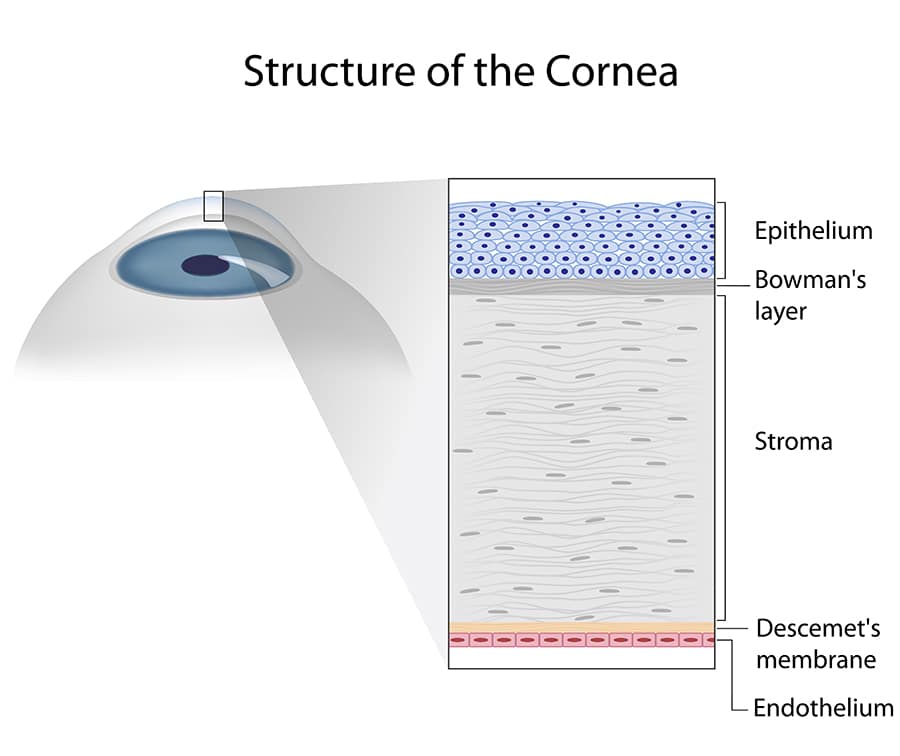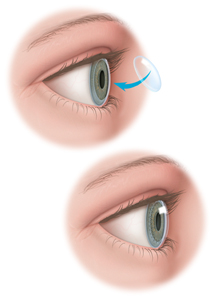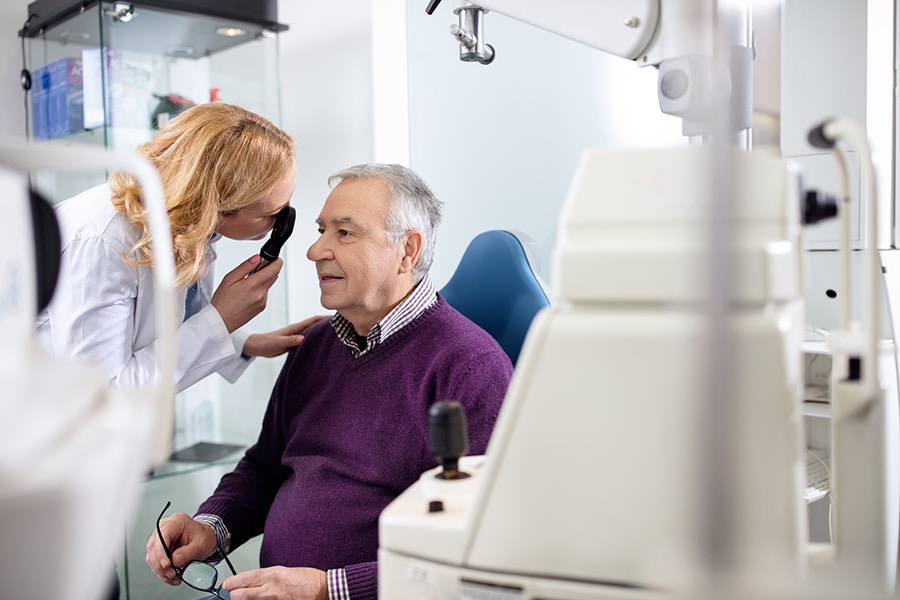About Corneal Transplant
A corneal transplant is sometimes necessary when the corneal tissue becomes damaged due to injury, infection, or disease.
The cornea is the clear dome-shaped front surface of the eye. Most of the refractive and focusing power of the eye is in the interface between the cornea and the air.
Corneal transplants are the most common type of transplants done in the world with a success rate well over 90%.

What Is A Corneal Transplant?

During a corneal transplant, damaged tissue is replaced with healthy donor tissue obtained from a local eye bank. Traditionally, a penetrating keratoplasty (PKP) would be the type of corneal transplant required to treat many corneal problems. Here at ECI, we also employ various advanced surgical techniques to improve visual outcomes and shorten recovery time.
Corneal Transplant
Increasingly, the cornea has been the focus of advanced laser and surgical procedures to correct vision for those with medical ocular problems as well as those requesting a reduction in the need for glasses. Descemet Stripping Endothelial Keratoplasty (DSEK), Descemet Membrane Endothelial Keratoplasty (DMEK), and Deep Anterior Lamellar Keratoplasty (DALK) are examples of these new advances in surgical procedures.
Dr. Ni currently heads the surgical and external disease practice. In America, there is generally no shortage of corneas due to the excellent eye banks around the country. Eye banks are now supplying increasingly sophisticated pre-cut tissue for treating problems with either the front of the cornea or the posterior part of the cornea.
Conditions Most Likely To Require A Corneal Transplant
Since the cornea is the foremost part of the eye, the cornea is often a target for injury. The following conditions are a partial list of traumatic corneal problems that might require eventual corneal transplant surgeries:
- Foreign bodies in the visual axis
- Chemical injuries
- Penetrating injuries, such as industrial accidents
- Corneal lacerations from blunt trauma
- Corneal drying from injuries that prevent the eyelids from closing
- Corneal endothelial dystrophy
- Bacterial and viral corneal infections
- Persistent corneal swelling after cataract surgery

The cornea has remarkable healing properties and copes very well with minor injuries or abrasions. Deeper scratches or injuries can result in scarring. When this occurs in the visual axis, the vision may be affected, even to the point of blindness. Corneas with partial-thickness scars can be treated with traditional penetrating corneal transplants or, in some cases, with deep lamellar or partial corneal transplant. The deep anterior lamellar transplants (DALK) have a quicker recovery. Patients with either scarring from keratoconus or have become unable to wear contacts to correct their keratoconus are often suitable for this meticulous and technically challenging type of corneal transplant.
What People Say About Us!
"I would like everyone to know about the Eye Care Institute in Santa Rosa. Their surgeons performed corneal transplant on both of my eyes. I now have good vision. They took excellent care of me and I trust them completely. These transplants improved the quality of my life greatly. We live 4 hours away and feel blessed to have this kind of care available even at this distance."
Click here to read more reviews.
To learn more about our services click on the links below:
How Is A Corneal Transplant Performed At The Eye Care Institute?
Prior to your surgery, you’ll be given a sedative. You’ll be awake during the procedure, but your eye will have local anesthetic, so you won’t feel anything.
In the most common type of corneal transplant, Dr. Ni cuts through the entire thickness of the abnormal or diseased cornea to remove a circular disk of tissue. To precisely make this cut, she uses a trephine that will make the circular button-sized cut.
Now the donor cornea is cut to fit the same size and is placed in the space of the removed circle of tissue. Dr. Ni stitches this new cornea into place and the procedure is complete.
In some patients, full-thickness corneal transplants aren’t the way to go. These procedures remove certain layers of cornea tissue, either the back layers or front layers, which are then replaced with donor tissue.
How long does a transplant procedure take?
These transplants take from 1-2 hours, depending on if they are full thickness or layer replacements.
How long before you can see after a corneal transplant?
Dr. Ni will have an eye patch over the eye with the transplant. This will be in place for one to two days; it will be removed when you return for your checkup to see how your eye is healing. Your initial vision will likely be worse than it was prior to your surgery, but this is only temporary. Still, it can take months for your eye with the transplant to fully improve.
Because you only have surgery on one eye, your other eye is unaffected. That enables you to see normally from that eye, even as your operated eye heals and improves.
To show what we mean, some patients can drive themselves after just a day or two. Most patients whose job doesn’t demand heavy lifting or other strenuous activity that elevates blood pressure to the face can return to work within one week.
How long does a transplant last?
There is no set timeframe for how long these transplants will last. Research has shown transplanted corneal tissue can last for 20 years or more. Vision correction achieved was between 20/20 and 20/40 vision with corrective contact lenses or glasses.
What Is Recovery Like After A Corneal Transplant At The Eye Care Institute?
Total corneal transplants can require recovery times of a year or longer. Initially, your vision will be blurry for the first few months. It can be worse than before your surgery, which can be disconcerting. Your eye simply needs to get accustomed to your new cornea. Generally, DMEK and DSEK patients achieve good vision more quickly.
Your vision will improve, and you can return to your normal daily activities. You’ll have to avoid heavy lifting and strenuous exercise for several weeks to keep from elevating the blood pressure to your face and eyes. Most patients, depending on their occupation, can return to work within a week after these surgeries.
You’ll use prescription steroid eye drops for several months after your surgery to help your body accept the new corneal graft. Other medications will help control swelling, discomfort, and the possibility of infection. You’ll wear eyeglasses or an eye shield at all times to keep from inadvertently bumping your eye.
If stitches were used, they will be removed from 3 to 17 months after surgery, depending on your rate of healing. We can make adjustments here to help reduce the amount of astigmatism that has been created.
How long after my corneal transplant will I be able to drive again?
This depends upon your vision quality in your other eye. Some patients have good vision quickly and can drive only a couple days after their surgery. It’s likely we will advise you to take a little longer, however.
What are the risks involved with a corneal transplant?
These are relatively safe procedures, but there are some risks. The biggest risk with corneal transplants is that your body will reject the donor cornea. This occurs in nearly a third of corneal transplant patients. It occurs when your body believes the new tissue is a foreign body and attacks it.
If you recognize the warning signs of tissue rejection, however, graft failure can often be prevented. To remember what to look for use the acronym RSVP:
- Redness
- Extreme Sensitivity to light
- Decreased Vision
- Pain
The possibility of rejection can last for years after your surgery; that’s why steroid drops are used. If any signs of rejection are detected early, the graft is successful around 90 percent of the time.
Other possible risks include eye infection, increased risk of cataracts, increased pressure within the eyeball (glaucoma), problems with stitches, and swelling of the cornea.
Book Your Corneal Transplant Consultation In Santa Rosa!
For more information on corneal transplants or to schedule an appointment today with Eye Care Institute, call us today at 707.546.9800 or click here to contact us online. Our practice serves Santa Rosa, and the surrounding areas of California.
